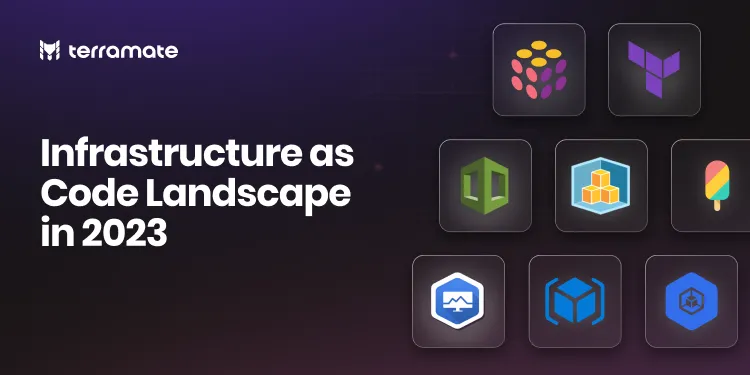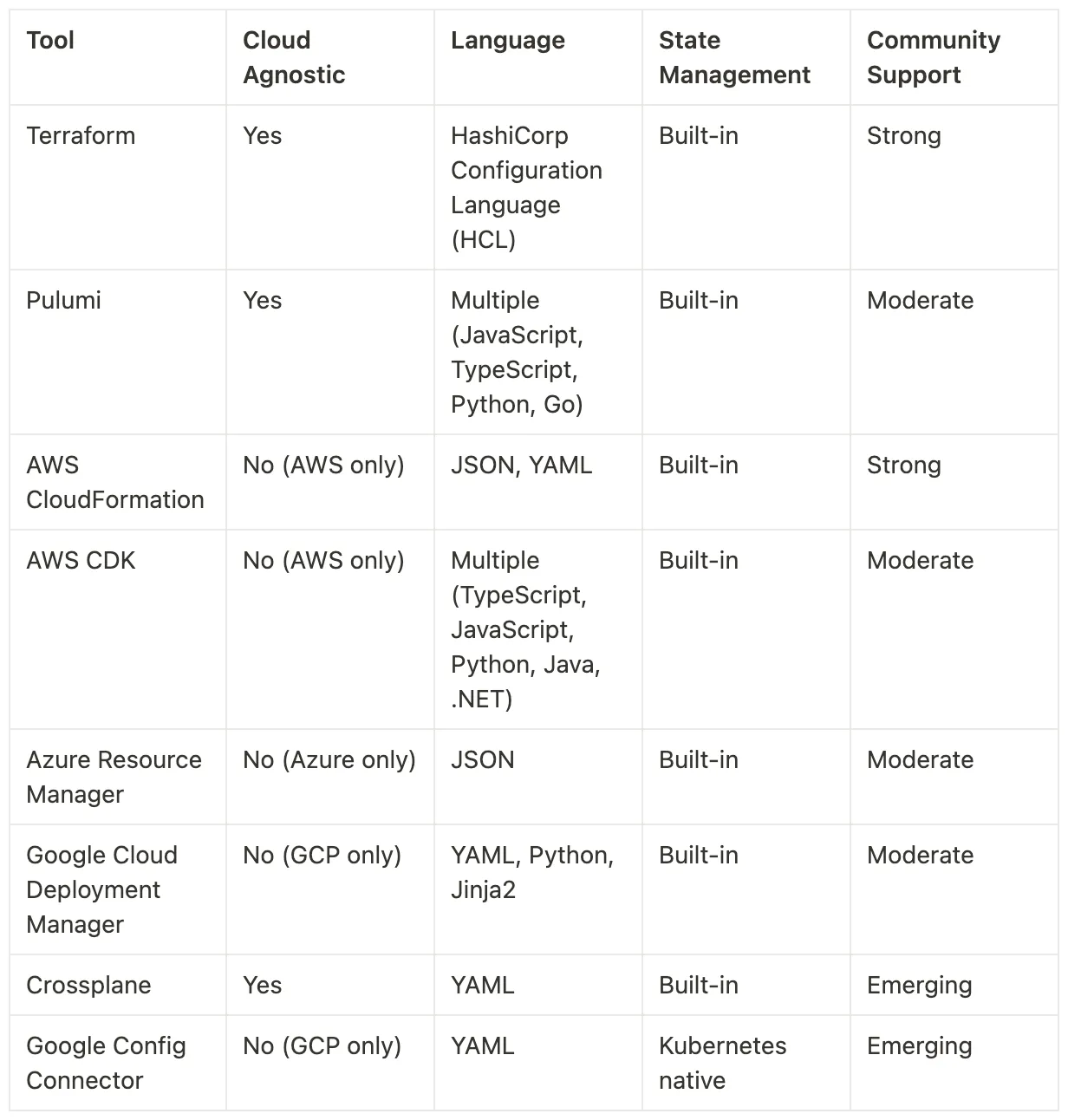Infrastructure as Code Landscape in 2023
Bron: artikel Gedeeltelijk overgenomen van terramate.io
Origineel auteur: Sören Martius

Overview
2023 was a significant year for Infrastructure as Code (IaC). With the increasing adoption of cloud-native technologies, businesses are turning to IaC solutions to manage their cloud infrastructure more effectively. As cloud infrastructures become more complex, the demand for IaC tools is growing rapidly. The market is expected to expand from USD 0.8 billion in 2022 to USD 2.3 billion by 2027, representing a 24.0% Compound Annual Growth Rate (CAGR) over a five-year period.
Various tools have emerged to meet this demand, with Terraform leading the pack due to its extensive capabilities and agnostic nature. This article explores the different IaC tools available in 2023 and discusses why Terraform is the current leader.
Key Players in the IaC Landscape
Below are the key players in the Infrastructure as Code ecosystem in 2023:
-
Terraform: Created by HashiCorp, Terraform uses a declarative programming approach and is provider-agnostic. It dominates the market due to its versatility and extensive support for various cloud providers. Note that HashiCorp changed the license type for Terraform, making it no longer open-source.
-
Pulumi: Pulumi allows developers to write IaC in their preferred programming language. This flexibility has contributed to its growing popularity.
-
AWS CloudFormation and AWS CDK: CloudFormation provides a way to create and manage AWS resources, while AWS CDK allows developers to define cloud infrastructure in code and provision it via CloudFormation.
-
Azure Resource Manager (ARM) and Bicep: ARM is Azure's deployment and management service, and Bicep is a Domain-Specific Language (DSL) designed to simplify authoring ARM templates.
-
Google Cloud Deployment Manager and Google Config Connector: Deployment Manager automates the creation and management of Google Cloud resources, while Config Connector represents Google Cloud resources as Kubernetes objects.
-
Crossplane: An open-source project that integrates directly with Kubernetes, enabling infrastructure management across various cloud environments.
-
Winglang: A recently released "programming language for the cloud" that combines infrastructure and runtime code into one language. It compiles to various IaC languages like HCL and CDK.
Why Terraform Stands Out
Despite the diversity of IaC tools, Terraform stands out for several reasons:
-
Multi-Cloud Provisioning: Terraform manages resources across multiple cloud providers, simplifying infrastructure management in multi-cloud deployments.
-
Kubernetes Management: Terraform supports provisioning and managing Kubernetes clusters across different platforms.
-
Network Infrastructure Management: Terraform can handle key networking tasks, ensuring secure and updated network configurations.
-
Workflow Integration: Terraform integrates with existing CI/CD workflows, allowing automated infrastructure deployments.
-
Policy Enforcement: Terraform uses Sentinel for policy as code, enforcing policies before infrastructure creation to ensure compliance.
-
Ecosystem and Community: Terraform's rich ecosystem and community provide a wealth of open-source modules and active support.
-
Seamless Integration and Enterprise-Level Support: Terraform integrates with DevOps tools and provides enterprise features like collaboration, governance, and policy as code.
Terraform's popularity is reflected in the 43,461 companies using it, with a significant portion in the IT and Services industry. The largest user base is in the United States.

HashiCorp License Change and OpenTofu
On August 10th, 2023, HashiCorp announced a license change for Terraform from MPL v2 to the BSL license for future releases, making it no longer open-source. This change led to the creation of OpenTofu, a fork of the v1.5.x Terraform code maintained by the community and managed by the Linux Foundation.
Preparing for the Future of IaC
As IaC usage rises, open-source IaC solutions are gaining interest due to their vendor-agnostic nature. With various tools available, companies can get their infrastructure up and running quickly and efficiently. Understanding and leveraging IaC effectively will be crucial for future success.
While Terraform is a dominant player, the right tool for your specific use case may vary. The choice depends on various factors, including the complexity of your environment, your team's expertise, and the cloud services you use.
Conclusion
The IaC landscape is rich and diverse, with Terraform leading the pack. As businesses scale and cloud infrastructures become more complex, the demand for efficient, effective IaC tools will continue to grow.
The goal is to manage infrastructure efficiently through code. Whether you choose Terraform, OpenTofu, Pulumi, AWS CloudFormation, Azure Resource Manager, or another tool, focus on transforming how we think about and manage infrastructure in the cloud era.
For more updates and information on IaC, be sure to join our Discord channel.
